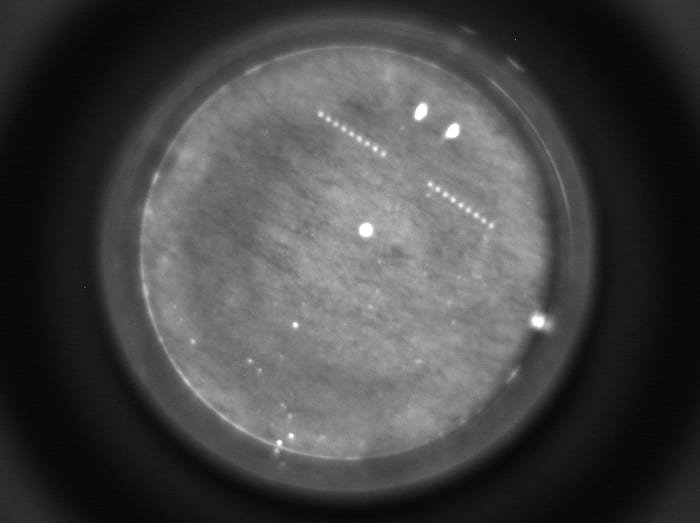Each summer, large numbers of dormantcysts of the harmful algal species Alexandrium fundyense hatch from the seafloor off the Northeast Coast of the U.S. and cause shellfish grounds in New England to close when toxin accumulates in shellfish that feed on the algae. Over the past two years, researchers from WHOI and the Monterey Bay Aquarium Research Institute have deployed an environmental sample processor (ESP), a miniaturized, automated genetics lab, on a mooring in the Gulf of Maine to monitor the water for signs of the algae. The three large spots in this image are controls used to ensure the instrument is functioning properly and the line of small spots shows where nucleic acids from A. fundyense cells in the sample bound to a set of molecular probes on a filter. Data from the ESP are informing state agencies and others about offshore toxic algae abundance, augmenting nearshore shellfish toxin monitoring.(Photo courtesy of Donald Anderson, Woods Hole Oceanographic Institution)
Image and Visual Licensing
WHOI copyright digital assets (stills and video) on this website can be licensed for non-commercial use upon request and approval. Please submit your request via our Media Request Form.
For assistance or accessibility accommodations, call (508) 289-2647.
